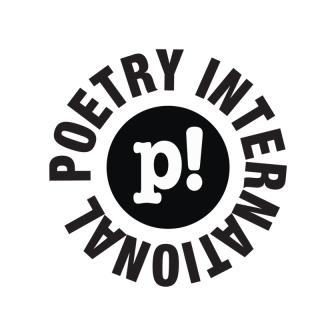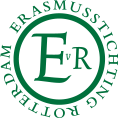Article
Editorial: May 2007

April 29, 2007
Frances Presley’s work is described as “radical pastoral”, and again the natural landscape plays a part, as does a kind of taxonomy. Her poems mix these traditional themes with a linguistic playfulness.
he was holding the kettle
above the birdbath
melting the ice
gold tipped wings
and straight back
against the low tree
holding their
(apple)
onyx
‘February/ In St Michaels’
The two female poets are joined by Peter Riley who again engages with the landscape but, again in Great British mode, explores and conquers places beyond the British Isles : from ‘Dar es Suriani’ to Transylvania.
Like Frances Presley, the Flemish Jos de Haes combines elements of traditional poetry with modernism, in his case referencing classicism rather than the pastoral. His principle motif is “an experience of physicality laden with feelings of guilt and impotence,” writes Anne Decelle. However, reading Paul Vincent’s skilful translations, these dark themes don’t detract from the reader’s enjoyment of his poetic language.
The two excellent long poems by Stefaan van den Bremt (1941), make good bed companions to the work of Lo Fu (1928), an established Chinese poet. Lo Fu’s poems have more of an imagist quality (see ‘Beyond the Fog’ which reminds me of a Chinese illustration) but both poets crystallize the abstract and intrigue the reader in the same way Wallace Stevens does. Lo Fu’s ‘Driftwood’ is incantatory and reassuring.
To deny illness unnecessary
To prevent fading and ageing unnecessary
To cling it is said is more toxic yet
And, of course, unnecessary
To sift unnecessary
To be sifted also unnecessary
Open-mindedness unnecessary
Transcendence unnecessary
“Transcendance unnecessary” brings us full circle back to Australia, where critic Lyn McCredden’s essay on Pam Brown, ‘Untranscended Life Itself’ argues that Brown’s realism engages with the sacred, its possibility and impossibility. Perhaps this engagement, whether conscious or not, lies at the heart of poetry’s ability to move us.
In May’s issue, Australia publishes new poems from four of the poets already featured on the site - Pam Brown, Martin Harrison, Gig Ryan and Jane Gibian, as well as a wealth of critical material. ‘Surviving Australian Poetry – The New Lyricism’ by literary critic, David McCooey, surveys the contemporary poetic landscape in Australia and offers an insight into poetry publishing there. We hope to feature similar articles from other countries soon. ‘Country and How to Get There’ by Martin Harrison examines his own sense of place in his homeland.
Poetry can represent place in many different ways, whether descriptively, politically or ideologically. What is the Australian identity portrayed in its poetry? In his introduction to the new pages, editor Michael Brennan proposes: “The poems here do create ‘Australia’ in ways, allowing it to enter the imagination as a place of multiplicity and diversity, a community of differences drawn across the inner city and inner lives, dead rivers and dry wit, irony and celebration, critique and communion.”
Meanwhile, on the UK pages, critic Tim Allen also describes British poet, Elisabeth Bletsoe as “a poet of place”. He continues, “location remains important to her work, whether the Cardiff of her ‘Regardians’ or the Dorset landscape of her Hardy-heroine sequences. These places are resolutely human, the scenes of a mental dynamism.” To me, the poems from the collection Pharmacopoeia, speak of place in a different kind of a way, they are redolent of the eighteenth and nineteenth century discipline of natural history, ‘notes’ which point to the (Great) British collector of things, and places. Her work can also be described as symbolist, the poems are beautifully–shaped, exquisite, esoteric puzzles.Frances Presley’s work is described as “radical pastoral”, and again the natural landscape plays a part, as does a kind of taxonomy. Her poems mix these traditional themes with a linguistic playfulness.
he was holding the kettle
above the birdbath
melting the ice
gold tipped wings
and straight back
against the low tree
holding their
(apple)
onyx
‘February/ In St Michaels’
The two female poets are joined by Peter Riley who again engages with the landscape but, again in Great British mode, explores and conquers places beyond the British Isles : from ‘Dar es Suriani’ to Transylvania.
Like Frances Presley, the Flemish Jos de Haes combines elements of traditional poetry with modernism, in his case referencing classicism rather than the pastoral. His principle motif is “an experience of physicality laden with feelings of guilt and impotence,” writes Anne Decelle. However, reading Paul Vincent’s skilful translations, these dark themes don’t detract from the reader’s enjoyment of his poetic language.
The two excellent long poems by Stefaan van den Bremt (1941), make good bed companions to the work of Lo Fu (1928), an established Chinese poet. Lo Fu’s poems have more of an imagist quality (see ‘Beyond the Fog’ which reminds me of a Chinese illustration) but both poets crystallize the abstract and intrigue the reader in the same way Wallace Stevens does. Lo Fu’s ‘Driftwood’ is incantatory and reassuring.
To deny illness unnecessary
To prevent fading and ageing unnecessary
To cling it is said is more toxic yet
And, of course, unnecessary
To sift unnecessary
To be sifted also unnecessary
Open-mindedness unnecessary
Transcendence unnecessary
“Transcendance unnecessary” brings us full circle back to Australia, where critic Lyn McCredden’s essay on Pam Brown, ‘Untranscended Life Itself’ argues that Brown’s realism engages with the sacred, its possibility and impossibility. Perhaps this engagement, whether conscious or not, lies at the heart of poetry’s ability to move us.
© Michele Hutchison
Sponsors
























